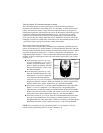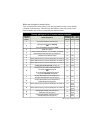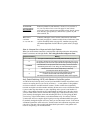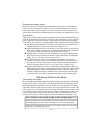
Security and Additional Convenience Features
(cont.)
✔
Patented Smart AutoTesting— Automatically tests all triggers and sensors
every time you remotely arm and warns you if you accidentally arm the
system with the bonnet, boot or a door ajar. If there is a genuine trigger or
sensor malfunction, the system will specifically identify the problem, thereby
eliminating time-consuming and costly trouble-shooting.
✔ Patented Malfunction AutoBypass with Automatic Monitoring — In the
unlikely event of a trigger or sensor malfunction, AvantGuard III will
automatically bypass the malfunction and arm all other points to continue
relentless protection of the vehicle. If you simply left the bonnet, boot or a
door open when you armed, just close it and the system will again monitor
that trigger point.
✔
Multiple-Event TotalRecall— The AvantGuard III’s memory stores the
identity of the last eight trigger and sensor activations. This provides an
invaluable diagnostic means, since, whenever you wish, the system will
visually identify the activated triggers and sensors in reverse chronological
order.
✔
Patented Smart Prior Intrusion Attempt Alert — When you return to your
vehicle and disarm your AvantGuard III, a special chirp and side light flash
sequence will audibly and visually alert you from a distance if an intrusion
attempt was foiled while you were away. Your AvantGuard III will even
identify the specific trigger or sensor that detected the intrusion attempt.
✔ Multiple-Car Control — You can interface your 16-channel remote controls
with Clifford ACG systems on up to seven of your other vehicles.
✔ High-Luminescence LED Status Indicator with Automatic Battery-Saving
Mode
— Adds visual deterrence and identifies system status. To conserve
vehicle battery power (since the LED draws more current than the control
unit), if the system has remained continuously armed for 48 hours, the flash
rate will automatically slow to half the normal rate. If left continuously
armed for 96 hours, the flash rate will slow to one-quarter the normal rate.
✔
Multiple Sensor/Trigger Inputs— Separate inputs for two sensors as well as
separate inputs for the doors, boot and bonnet allow for precise trigger/sensor
identification.
11


















